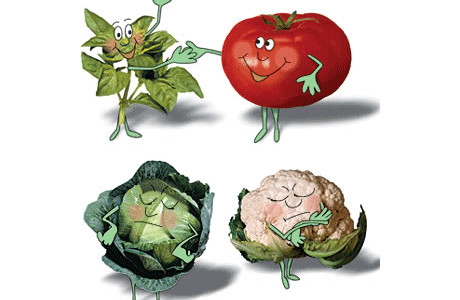Companion planting flowers with vegetables is an age old practice. Not only is it aesthetically pleasing but logical too. There is no need to justify why your planting flowers instead of vegetables as the two go hand in hand in organic gardening. Inter planting flowers amongst the vegetables or using them as borders provide many benefits:
-
By making vegetables more productive through attracting pollinators to the garden. Some vegetables do not produce showy flowers and therefore pollinators do not get attracted to them.
-
By repelling pests and promoting visits from beneficial insects who feed on the pests.
-
By planting different flowers along with the vegetables creates a unique biodiversity in your garden.
BENEFICIAL INSECTS:
-
Parasitic wasps – feed on aphids, caterpillars, coddling moth, and tomato grubs.
-
Ladybug larvae (Hippodamia convergens) – feed on mites, scales, mealybugs and aphids. They can consume over 5000 aphids in their life cycle (Copyright 2008 Nature’s Control.)
-
Hover flies, and Robber flies – feed on many insects, including aphids, thrips, leafhoppers, grasshoppers, moths, beetles, caterpillars and other flies.
-
Ground beetles – feed on ground-dwelling pests.
-
Lacewing larvae (Chrysopa rufilabris) – feed on aphids, mites, scale, fungus gnats, thrips, mealybugs and whiteflies.
-
Preying mantis (Tenodera sinensis) – feed on a variety of garden pests.
-
Damsel flies – prey on mosquitoes and other flies.
As insects have different feeding requirements throughout their stages of development, a diversity of flora is crucial for attracting them the garden. It is true that they feed on pest insects but there are certain stages of their life cycles where they need nectar and pollen in their diet. This is where the flowers are poignant to the insect’s life, both providing food, host plants and shelter.
Sometimes neighbouring flowers are used to attract the pests. This kind of crop is called a trap crop. The pests get attracted to the trap crop which is eventually uprooted and disposed of.
-


An Assasin Bug making a meal of a 28 spot lady bug Beneficial Insect eggs


A 28 spot lady bug A benificial lady bug
COMPANION FLOWERS:
Beneficial insects are attracted by flowers from mainly the aster family (Asteraceae) and umbellifers family (Umbelliferae). This is not to say that other flowers won’t work.
Asteraceae: includes daisies, asters, chrysanthemums, sunflowers, dahlias, calendulas, tagetes, zinnias, strawflowers, camomile, tarragon, lettuce, cornflower, chicory, dandelion, gerbera, thistle, wormwood etc.
Umbellifers: especially attract parasitic wasps and predatory flies. Includes: dill, carrot, parsnip, parsley, lovage, celery, coriander, fennel, anise, angelica, chervil, caraway etc.
African and Mexican marigolds produce a pesticidal chemical (thiopene) from their root systems, so strong it can last years after they have died. Certain Varieties of marigolds (Tagetes) can help manage nematodes when planted the previous year. Marigolds and mustard greens used as a green manure help in depleting soil nematodes.
Petunia Petunia x hybrida
Petunias help to repel melons beetles, cabbage pests and spider mites. Petunias as a trap crops attract beet leafhoppers.
Chamomile (matricaria recutita)
Attracts beneficial wasps and hoverflies. Repels cabbage white butterfly.
Chrysanthemum (Chrysanthemum)
Can be used to kill nematodes and encourage an array of beneficial insects.
Cosmos (Cosmos sp.)
Repels Mexican bean beetle attracts predatory insects.
is among the best at attracting predatory insects to the garden. Also used as a trap crop in luring aphids away from your vegetables.
Sunflower Helianthus annuus
It is s said that they encourage ants to herd aphids onto them, keeping them off the neighbouring vegetables. (http://vegetalshapes.com/index.html)
Tansy Tanacetum vulgare
Deters many non-nectar eating insects. Including: cucumber beetles, squash bugs, sugar ants, mice, fleas and moths. It is toxic to many animals, so don’t plant it where livestock graze.
Sweet peas Lathyrus odoratus
Attract pollinators.
Sweet alyssum. Lobularia maritia.
Attracts hoverflies, ladybugs, big-eyed bugs, lacewings and tachinid flies




